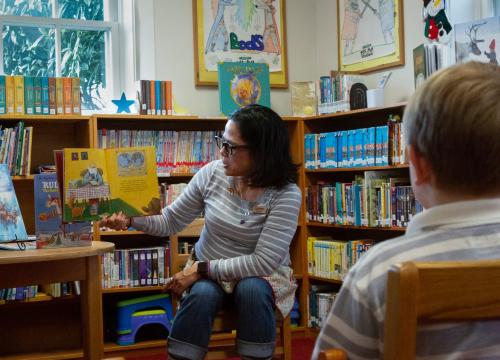This historic moment is highlighting how unprepared many of America’s children are to absorb the shock of this pandemic. As epidemiologists grapple over the public health consequences of COVID-19 and economists debate how best to prop up the economy, the inevitable negative impacts of economic and health distress on family life and children’s well-being are more an informational news story than a national rallying cry.
All American families, rich or poor, are facing economic uncertainty. In the best of cases, such economic uncertainty will be short-lived with manageable health consequences; but for the 16 percent of children growing up in poverty (one in six children), the economic shock of COVID-19 might never be recoverable. A generation of children—including the millions who will be born in 2020—will be at risk not only because schooling and formal learning have been disrupted (in the near term) but also because financial distress has long-term negative consequences, including food insecurity and housing instability, to name a few. This is especially damaging when it occurs during the first three years of a child’s life—at a time when food and strong caregiver attachments form the foundation for a child’s learning and social trajectories throughout life and at a time when “toxic stress” can have the greatest impact. And it is just as damaging during adolescence, when emotional and social development around risk-taking and identity formation conflict with social distancing and shelter-in-place rules.
The ways that financial distress will present itself in the near and long term will vary. For many children, the first consequence is the immediate economic hit from job loss experienced through poverty and related material hardships. The evidence on the negative impacts of poverty, even if short-lived, on children’s development is unequivocal.
The second consequence is financial instability. Financial instability at already low income— whether through uncertainty and unpredictability about income from jobs, government assistance, or informal networks—further amplifies financial and psychological stress in the household. This type of financial instability can affect daily consumption needs such as food, rent payments, and generally keeping the lights on, and can also affect parents’ mental bandwidth to create stable learning environments for their children. This type of stress can also chip away at parents’ existing capacities to be responsive and warm, even among those who typically practice these behaviors. Such stress can strain parenting practices, psychological health, and even brain development. Indeed, a recent study of the mental health of parents in the low-wage labor market who lost jobs post-COVID-19 show troubling escalations. Worse, such stress can trigger unhealthy disciplinary practices and maltreatment for children with fewer escape routes in the current COVID-19 environment.
The third is overall economic precarity. This lens on financial distress incorporates the lack of insurance, savings, or assets that can act as cushions in the immediate term and can also exacerbate the effects of poverty in the long term. What is neglected in the current conversation about income poverty is that most children are not residing in households with enough existing economic resources to absorb near-term economic shocks, even as short as the time it might take for emergency response resources to arrive.
These three ways that economic health affect children’s lives are indirectly part of the active conversation among economists and policymakers (and, advocates) who are creatively addressing food shortages (e.g., grab and go food boxes from schools), rent payment forgiveness, and making eviction illegal. These endeavors will have immediate impacts on children’s daily welfare assuming the policies successfully reach economically vulnerable families. However, as COVID-19 unfolds, caregivers continue to meet the demands of their jobs, act as teachers, look after their children, and support their children’s learning and development. Financial distress overlaid with more demands in an overall landscape of uncertainty can have dramatic spillovers on quality of family life and parenting that are difficult to track and garner political momentum to address.
How the long-term negative ramifications will play out for American children—contributing to disparities across economic and racial/ethnic lines—can be gleaned from the Great Depression, and, more recently the Great Recession. These dramatic economic shocks also offer insights about resilience and positive ripple effects. Because jobs were so scarce after the Great Depression, surviving children spent more years in school, such that high school became a typical teenage experience for the first time in American history. The government also played a larger role in the wake of the Great Depression, with subsequent investments in day care centers, school lunches, playgrounds, and the 1935 Social Security Act. Society shifted from a norm of self-reliance and individualism to community and broader social welfare. From the Great Recession, we’ve learned about the safety net that can attenuate otherwise escalating rates of child poverty.
The most significant enduring lesson, however, is not one related to direct economic measures: Across both of these unprecedented economic events in America, the most damaging impact on family life and children’s well-being—beyond economic livelihood—is fear and uncertainty about the future.
The Brookings Institution is committed to quality, independence, and impact.
We are supported by a diverse array of funders. In line with our values and policies, each Brookings publication represents the sole views of its author(s).








Commentary
Where’s the rallying cry? America’s children are unequally prepared to absorb the impacts of COVID-19
May 13, 2020